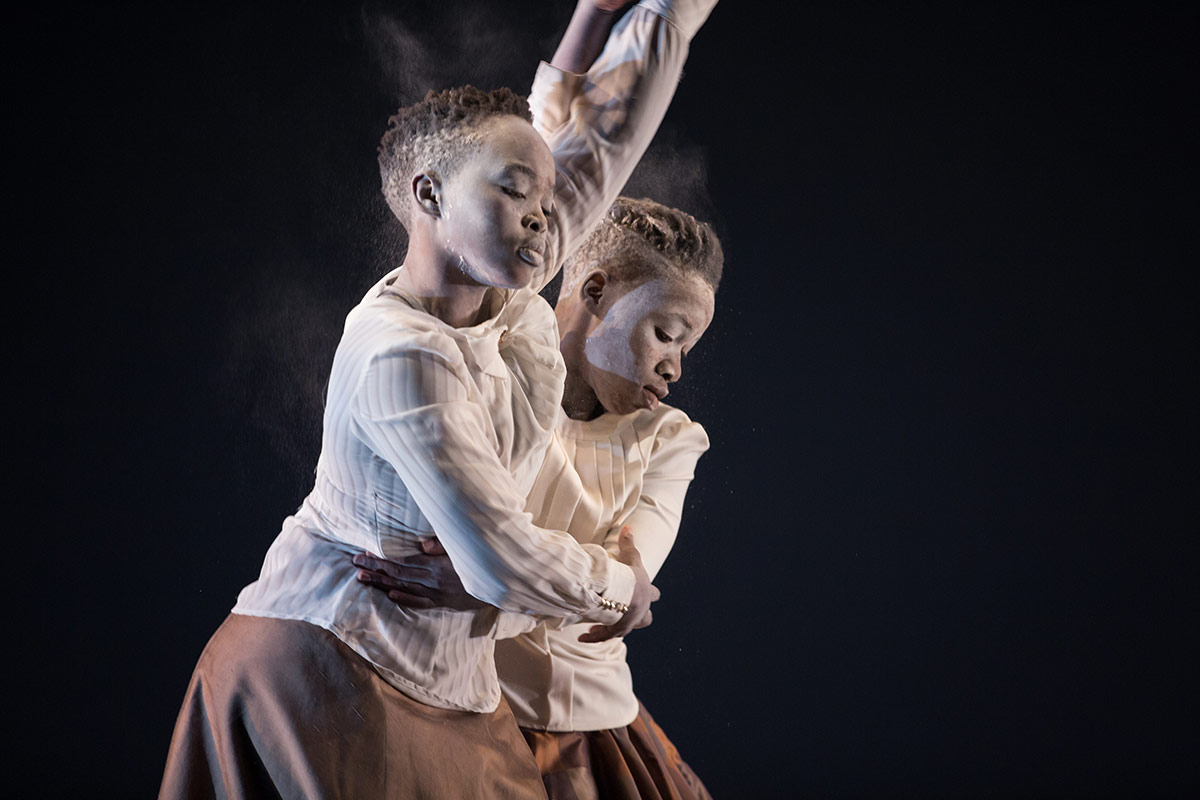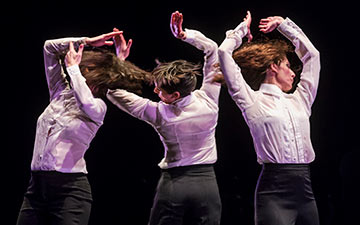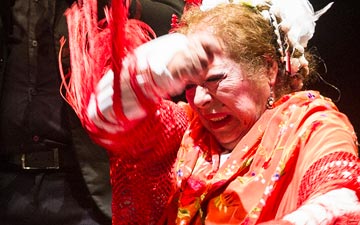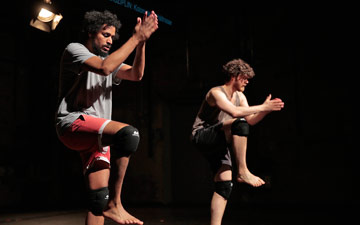
© Julieta Cervantes. (Click image for larger version)
DanceAfrica Festival 2018
Ingoma KwaZulu-Natal Dance Company
Siwela Sonke Dance Theatre
BAM/Restoration Dance Youth Ensemble
★★★★✰
New York, Brooklyn Academy of Music
27 (mat) May 2018
www.bam.org/programs/2018/dance-africa
www.bam.org
For 41 years, DanceAfrica has been a revered and celebratory tribute to the cultural heritage of Africa. The festival is the largest of its kind in the United States, and features robust programming, including community events, dance workshops, a shopping bazaar, all in partnership with BAM’s FilmAfrica festival. After the passing of DanceAfrica founder, Baba Chuck Davis, in 2017, artistic director Abdel R. Salaam has lovingly continued Davis’ work, and, in conjunction with the 100th anniversary of Nelson Mandela’s birth, looked to South Africa for this year’s showcase. Aside from Brooklyn’s own BAM/Restoration Dance Youth Ensemble, all of the 2018 performers came from South Africa.

© Julieta Cervantes. (Click image for larger version)
After a processional tribute and introduction by Salaam (an incomparable emcee), the performances got going with Umbono 1 (Vision 1)-Rise. Choreographed and staged by Salaam, Rise – which commemorates anti-apartheid and civil rights leaders – had the air of a number from a Broadway show. Using drum-heavy cinematic music composed by Daniel Alexis Pemberton (from Guy Ritchie’s King Arthur soundtrack), Rise projected images of black leaders and icons onto scrims, with dancers performing in pillars of light beneath. Spoken word was incorporated, including excerpts from speeches by Mandela, Biko (“no race possesses the monopoly of beauty…”) and others, including Maya Angelou reading her powerful poem, “Still I Rise.” There are references to the latest horrors suffered by the African community in America, to the continued prevalence of white supremacism and police brutality. The jumps are big, the extensions high, and there is a sensuous pas de deux which mostly occurs as Angelou is speaking. The mixture of jazz, hip hop, and some balletic steps with more traditional African movement is an exhilarating, effective package.
Because of the embarrassment of riches in South African culture, Salaam had a hard time picking troupes to bring back to Brooklyn. In collaboration with Duma Ndlovu (well-known as the casting director for most “Lion King” productions), he formed a supergroup of multiple troupes, and called it Ingoma KwaZulu-Natal Dance Company. The group includes the Zulu ensemble Kangaroo, two female troupes – Tswana Group and Amatsheketshe and Champions Dance Crew which specializes in pantsula, a street dance form.
Tswana gave the audience a taste of dancing from South Africa’s indigenous nomadic groups, the Khoi and San. Performed by the supergroup plus BAM/Restoration Dance Youth Ensemble, the movement was characterized by fast, energetic, rhythmic footwork in addition to clapping and singing. The deep resonant drumming was booming enough to assume it might have been heard outside the theatre. Athleticism came into play too with walking handstands, high kicks and somersaults done in all directions.

© Julieta Cervantes. (Click image for larger version)
The final piece, Umbono 3 (Vision 3): Ingoma KwaZulu-Natal was the real showstopper. The suite of dances included a rain dance (abadala), Zulu dances emphasizing militaristic strength (ingoma), street dancing (pantsula) and a highly acrobatic finale featuring KwaZulu-Natal dance.
The bright red joggers and suspenders of the pantsula dancers (Champions Dance Crew) won’t be forgotten anytime soon. The young, lithe fellows move with a happy, contagious energy that would make anyone want to get up and dance. Women in the audience responded with aroused interest in the troupe’s sexy hip swivels, and their versions of what essentially in ballet would be a pas de basque have them suspended in air for longer than seems humanly possible, their buoyancy and lightness are not only enviable but other-worldly. The tap-inflected style (some quick foot stepping looks almost jig like) was brought more into the public eye via Beyonce, who after viewing the Mozambique-based pantsula troupe Tofo Tofo online, tracked them down to teach her some moves and perform in her “Run the World (Girls)” video. Like many urban dance forms, pantsula is sharp, hyper-articulated and full of angles, but unlike many, something about it feels light and unburdened, even joyous.
The last section of the suite included high tension male acrobatics, including two pairs of men doing shoulder stands before hoisting a fifth man up above them – and then somersaulting backwards off each other. The thrilling acrobatics continued with walking handstands and partnered somersaults in exhilarating display of testosterone-fuelled hijinks. Lying down in a line, the men did a ‘wave,’ rolling their bodies in time to produce the effect of a giant snake slithering across the stage. One of the larger members of the troupe (well over 6’ tall and built like a sumo wrestler) paraded around with his shield, chanting, and got the audience revved up leading the final dance, with a high, forceful kick up to his nose, which the other dancers replicated in the high-spirited ending.

© Julieta Cervantes. (Click image for larger version)
A more introverted performance was offered by Siwela Sonke Dance Theatre in Umsuka. The contemporary troupe performed a piece by choreographer Neli Rushualang which was intended to tell the story of internal narratives – of the younger generation trying to coax out the buried tales of a family’s past from their elders. The dancing was highly articulated, with curving, spiraling motion from the female dancers, but theatre took a larger role than the dancing here, making the work as a whole feel disjointed and the storyline tough to discern.
At the very end of the performance, Salaam came out to pay tribute to the dancers, and to ask the audience to participate in simple chants, for peace, love and Africa. The audience spilled out into the aisles, and a small white girl (not more than three or four), punched her arms into the air chanting the responses “peace” and “love.” I’m sure she wasn’t the only one who walked out of BAM that afternoon feeling like she had gone to church. DanceAfrica is a welcome reminder of the uniquely universal powers of dance and music.

















You must be logged in to post a comment.